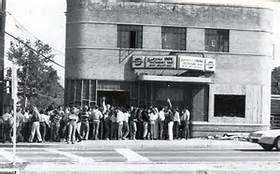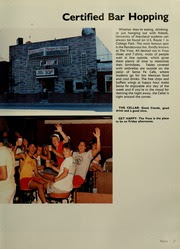| Games | Record | Pct. | |
| Chicago American Giants | 45 | 32-13 | .711 |
| Detroit Stars | 58 | 35-23 | .603 |
| Kansas City Monarchs | 70 | 41-29 | .586 |
| Indianapolis ABCs | 74 | 39-35 | .527 |
| Cuban Stars | 45 | 21-24 | .467 |
| St. Louis Giants | 57 | 25-32 | .439 |
| Dayton Marcos | 26 | 8-18 | .308 |
| Chicago Giants | 28 | 4-24 | .143 |
Our research is incomplete, so we can't yet tell you why there were so many Giants, especially in Chicago, and why some of those Windy City Giants seem to have been unAmerican (though their non-American status may be why they weren't all that good - unless they were Cuban, like the Stars (who were actually Cuban in large measure - and ain't that a hell of a double parenthetical)). That's for a later BKYNLBT. We do know that teams played different numbers of games because it was very difficult for all-Black teams to schedule games, ensure field space, travel safely, and do all of the things that white-owned teams took and take for granted.
The American Giants were owned by the legendary Rube Foster, who's widely known as the father of Black baseball. Foster was elected to the Baseball Hall of Fame in 1981 after a long career as a pitcher, owner, and manager.
And with that meager history lesson, on with the dipshittery:
Name: Chicago American Giants
League: Negro National League
Affiliation: As if a Major League Baseball team in 1920 would have anything to do with Black players. Come on, people. Though it's interesting, historically-speaking, to know that John Schorling, Charlie Comiskey's son-in-law, was a financial backer of Foster's Giants. The American Giants' home field was called Schorling Park, because of course the white guy would insist upon that.
Logo/Mascot: Back in the day, logos weren't as sophisticated as they've become. The American Giants featured an interlocking CAG motif that's pretty dope for being designed 100 years ago.
Self-Absorbed East Coast Elitist Commentary:
It say something not all that great about me that I'm just now digging below my surface knowledge of the Negro Leagues. Like many sports fans, I'm aware of Satchel Paige and Cool Papa Bell and Josh Gibson and Buck Leonard, and I know the names of the legendary teams like the Homestead Grays and the Birmingham Black Barons and the Pittsburgh Crawfords. But my expertise is limited. I did just get Joe Posnanski's 2005 book, The Soul of Baseball, which is the story of Buck O'Neil's life and times, and my interest is piqued. So you should expect more dropping of science that should've been part of the curriculum a long time ago.
I do love the idea of a Black-owned team that consisted entirely of Black players and coaches calling themselves the American Giants. That's a not at all subtle poke in the eye of a society that lynched 53 Black people in 1920 alone.
































